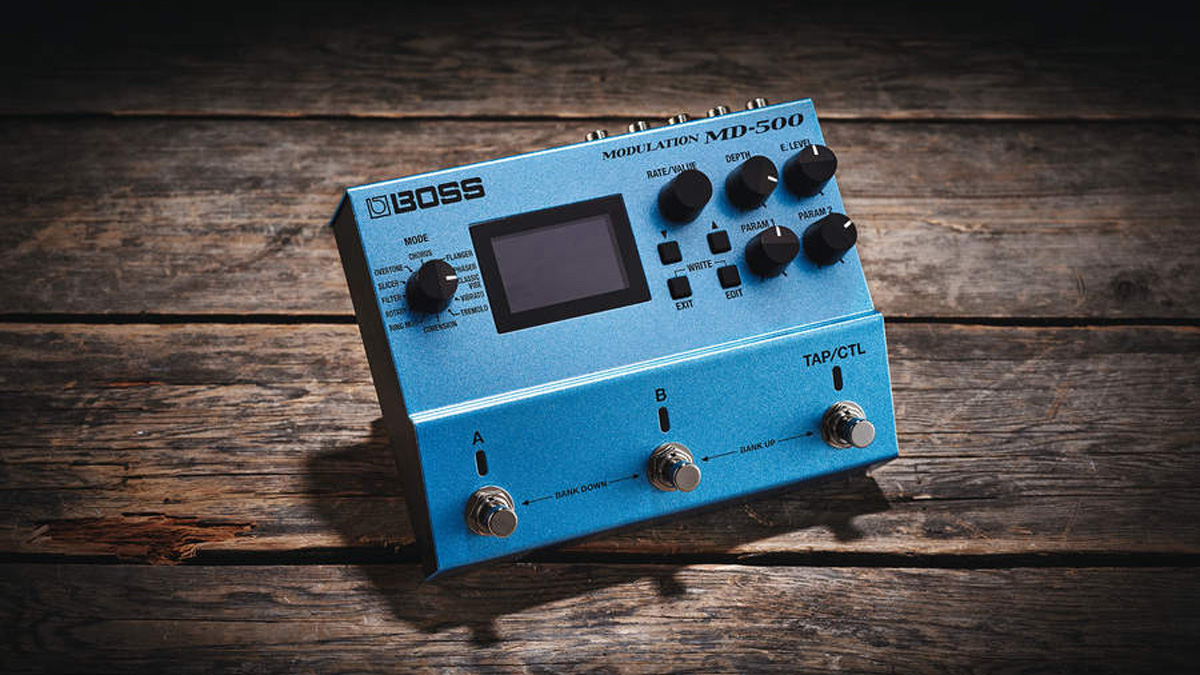MusicRadar Verdict
A powerful machine with a flexibility that’s hard to beat.
Pros
- +
Comprehensive range of modulation types.
- +
A/B Simul mode’s combined effects, practical insert loop, good number of patch memories.
Cons
- -
The setting up isn’t for all.
MusicRadar's got your back
We all like a bit of the swirly stuff on our pedalboards and the MD-500 offers it in just about all the guises that guitar players crave.
There are 12 distinct modulation modes with most having options to select several variations on the theme (there’s 28 algorithms in all). In Chorus mode, for example, you can have chorus pedal tone unique to the MD-500, the chorus and vibrato sounds from a vintage CE-1 or a 1980s LA sessionman favourite.
The whole footswitching/patch recall scenario and deep editing capability is the same as the RV-500 but there’s a different set of values assigned to the knobs - as well as the crucial Rate and Depth, you get Parameter 1 and 2 knobs with functions determined separately for each mode.
Alongside the standard triumverate of Chorus, Flanger and Phaser the MD-500 offers more specialised variations on these themes, notably Dimension simulating Roland’s Dimension D studio rackmount that delivered its own unique spacious sparkle, and Classic Vibe, a tasty Uni-Vibe emulation.
Incidentally, to answer that question of whether to have fuzz before or after a Uni-Vibe, an insert loop function lets you add another pedal into the MD-500 signal chain and flexible routing saved with a patch allows you to have it before or after the modulation or even between two modulation types in Simul mode.
You won’t need to insert a dirt pedal for the Rotary effect though as one parameter adds a growly driven-Leslie sound. Smooth amp-style tremolo is on offer but if you want to get more extreme with amplitude modulation there’s the Slicer with its choppy on/off that can be so effectively used with tap tempo. On top of those there’s excellent auto-wah, ring mod and octave effects.
As individual effects there’s excellent stuff onboard but the fact that you can combine two in A/B Simul mode takes this to a whole new place of creating stunning hybrid effects or just having a different pair of effects instantly available for every song in a set.
Want all the hottest music and gear news, reviews, deals, features and more, direct to your inbox? Sign up here.
The single pedal supplying a whole range of modulation needs is a very practical genre but some of them are limited to just one effect at a time. That the MD-500 can do two independent effects separately or combined gives it an edge over the close competition: it’s a powerful machine with a flexibility that’s hard to beat.
Trevor Curwen has played guitar for several decades – he's also mimed it on the UK's Top of the Pops. Much of his working life, though, has been spent behind the mixing desk, during which time he has built up a solid collection of the guitars, amps and pedals needed to cover just about any studio session. He writes pedal reviews for Guitarist and has contributed to Total Guitar, MusicRadar and Future Music among others.

